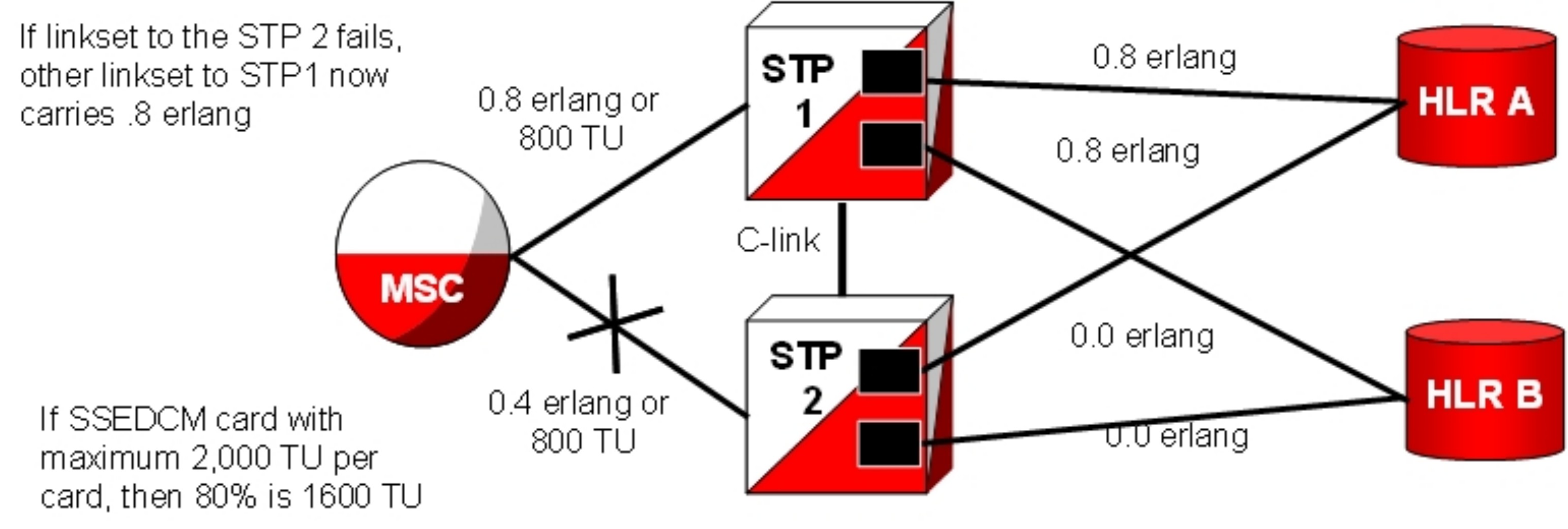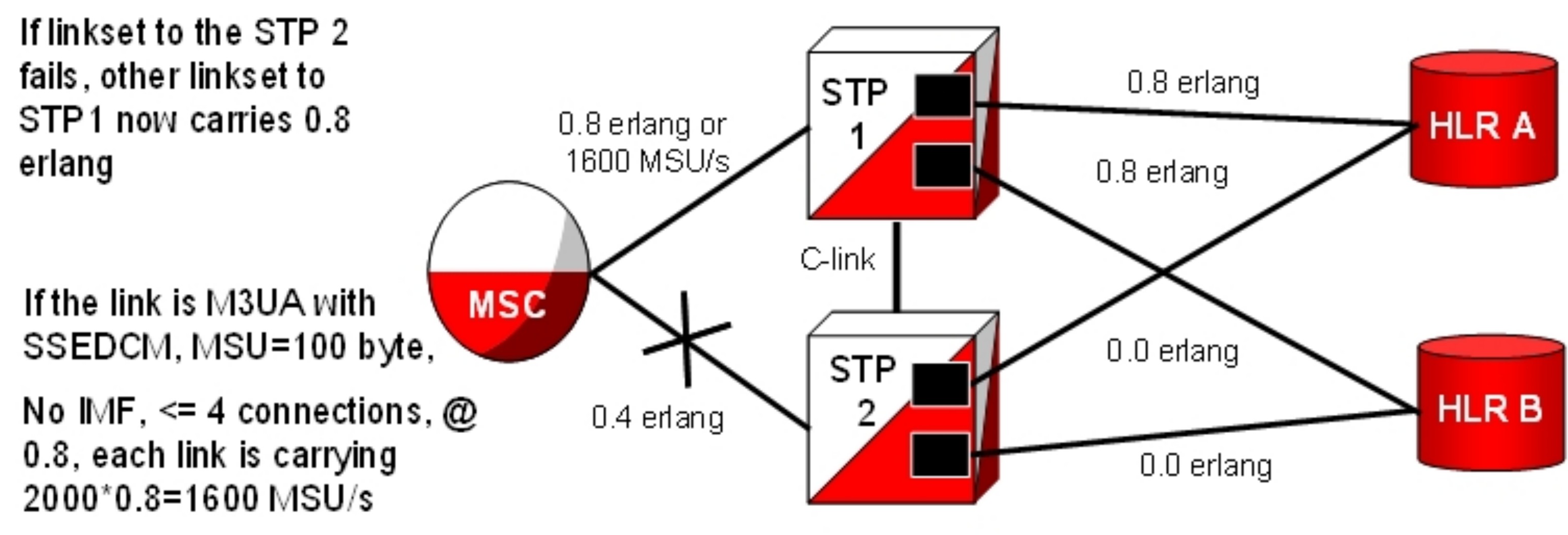| Oracle® Communications EAGLE SIGTRAN User's Guide Release 46.6 E97352 Revision 1 |
|
 Previous |
 Next |
| Oracle® Communications EAGLE SIGTRAN User's Guide Release 46.6 E97352 Revision 1 |
|
 Previous |
 Next |
This section provides general SIGTRAN engineering guidelines with examples of normal and failover scenarios and resulting MSU calculations. Some overall guidelines to keep in mind include:
Erlang is a statistical measure of the volume of telecommunications traffic. Traffic of one erlang refers to a single resource being in continuous use, or two channels being at 50% use, and so on.
The IPx (IPGWx, IPLIMx, and IPSG) applications can be configured as either an IPLIMx or IPSG supporting M2PA B-, C-, and D-Links; or as an IPGWx or IPSG card supporting A- and E-Links (see the note in M3UA (MTP Level 3 User Adaptation Layer) Protocol for more information about A-links).
Every IP link should carry 0.4 erlang (or 40% TU) in normal operation. For an E5-ENET card with a maximum of 2,000 TU per card, 40% is 800 TU. This scenario is depicted in Figure 5-1.
Figure 5-1 SIGTRAN: Every IP Link at 0.4 Erlang

If the linkset to STP2 fails, another linkset to STP1 now carries 0.8 erlang. For an ECDM-A card with a maximum of 2,000 TU per card, 80% is 1,600 TU. This scenario is depicted in Figure 5-2.
Figure 5-2 SIGTRAN: Failover at 0.8 Erlang

If the link is IPGWx M3UA with an EDCM-A, a 100-byte MSU, no IMF, and 4 or less connections at 0.4 erlang, each link carries 800 MSU/s (2000*0.4). This scenario is depicted in Figure 5-3.
Figure 5-3 SIGTRAN: Every Link at 0.4 Erlang and 800 MSU/s

If the linkset to STP2 fails, another linkset to STP1 now carries 0.8 erlang. If the link is IPGWx M3UA with an E5-ENET, a 100-byte MSU, no IMF, and 4 or less connections at 0.8 erlang, each link carries 1600 MSU/s (2000*0.8). This scenario is depicted in Figure 5-4.
Figure 5-4 EAGLE: Failover at 0.8 Erlang and 1600 MSU/s
